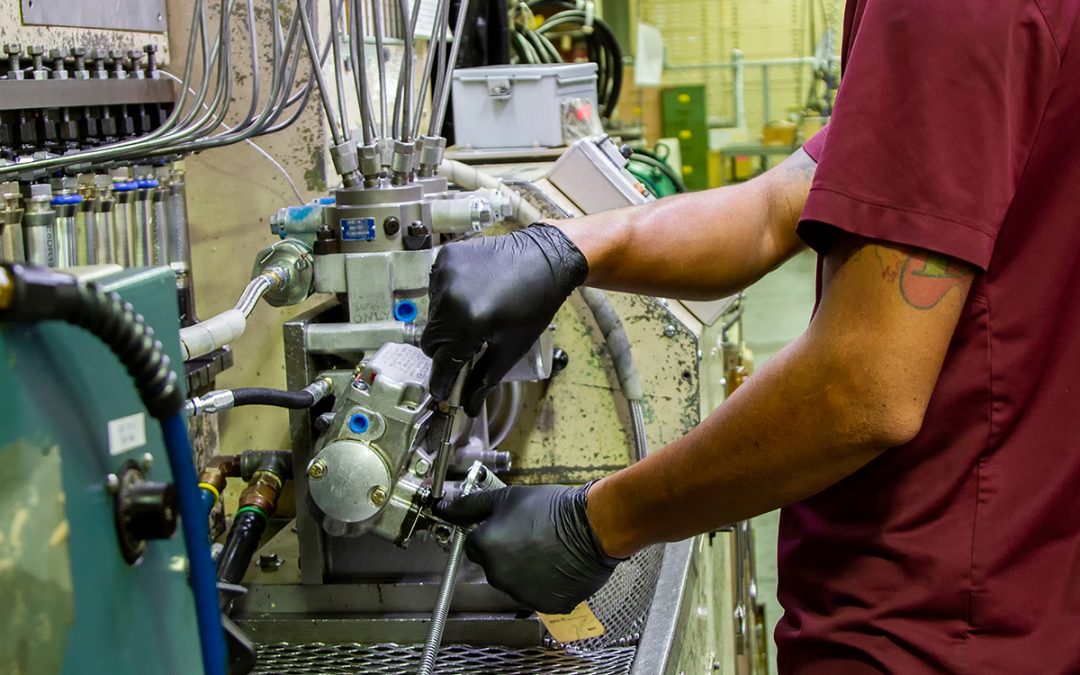By Eric Brisbon
The evolution of diesel technology has grown at an exponential pace attempting to keep up with tightening regulations on emissions. So much so, that some engine manufacturers were forced to exit certain segments of the business such as over the road trucking. Others seemingly decided to try and manipulate the outcome through software wizardry, but those are subjects for another time.
So many products have grown and matured from the older pump-line-nozzle system designs, up through and including common rail technology. Higher injection pressures, rate shaping, changes in fuel, charge air cooling, etc. all have their place in the aforementioned evolution. The irony however, is most of this culminates with a small piece of hardware with one moving part and a few orifices in it. It has a long life, good reliability, sells for very few dollars (comparatively speaking) and is a very challenging part to manufacture. For the sake of this discussion, we are talking a multi- hole inwardly opening injection nozzle used in most diesel applications today.
Engineers learned that modifying how fuel is delivered into a compression ignition engine has large results in power and emissions. Consequently, a fuel injection nozzle has a fundamental requirement to atomize fuel with certain criteria to attain the design intent. Certainly, this atomization is a function of injection pressure and the rate which fuel delivered to the nozzle over a finite time period.
Atomization of fuel is simply a result of taking a fuel stream and breaking it up into droplets. This act increases the amount of area available for combustion, as the area of several small droplets of fuel is much larger than its original parent. Also, not all droplets are created equal as the overall atomization will result in many different size droplets. As you might expect, their size falls into a distribute curve and has many influences such as orifice diameter and length, injection pressure, air density in the cylinder and even the surface roughness of the orifice itself. Therefore, it’s the mean droplet size for a given mechanical configuration that is normally documented.
Combustion will hinge on two principle actions as a result of these droplets; premix and diffusion burns. Premix happens to a small percentage of the fuel which has the correct amount of oxidizer available for the flame to propagate due to its own heat. Most of the fuel, however, requires the oxidizer to diffuse with the fuel (enter piston swirl, re-entry bowls, etc.) before the flame will begin on the outside of the droplet and diffusion must continue to create more flame front. Thus, the speed of the burn is based on the rate of diffusion, and if done poorly, belches lots of smoke and soot out of your stack.
The penetration of the flame into the combustion chamber is also important in the combustion process. Fuel must reach all areas in the bowl without over-penetrating and washing down the walls of the cylinder which not only create poor combustion output, but can also damage pistons.
Modern fuel systems have the ability to change injection rates throughout the injection cycle which allows you to optimize the injection cycle as a function of the engine requirement. Low rates at the beginning of injection can significantly reduce noise (and cackle). Higher premix burn time helps with the start of diffusion burn, thus reducing overall smoke. Wrap this with intercoolers (or after coolers) which changes the charge air density and a theme starts to emerge that allows engineers to optimize combustion events to specific applications and emission needs.
Digital controls have been a large step forward with modern fuel systems. However, without the reliability and consistency of the small nozzle with one moving part, the task of producing a competitive modern-day diesel would be more daunting than it already is.

